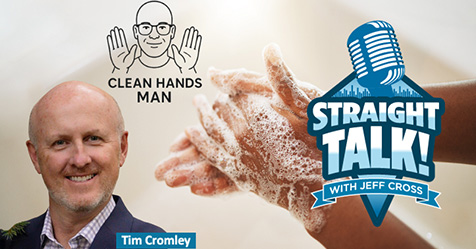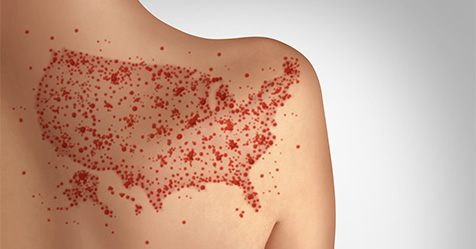It happens all the time. Schools close when too many kids start getting sick with the flu, norovirus, or a host of other diseases that spread quickly.
School closure is a strategy that many schools—both public and private, as well as at the collegiate and K-12 levels—use to stop a pandemic in its tracks. During a school closing, which can last up to several days, a school will implement a deep cleaning and disinfection program before opening its doors back up again. These stories can be heard about on the local news, and affect rural and urban areas sporadically throughout flu season, the peak of which lasts between December and February.
Recent research in the UK looked at the effectiveness of school closures in mitigating the spread of a flu pandemic and found targeted school closures, or even just the closure of specific classrooms, to be a valuable procedure in reducing the spread of influenza.
When to Close a School
According to Nicole Kenny, senior director of professional and technical services at Virox Technologies Inc., the decision to close a school depends on the pathogen and how it came into the facility. In a school, deciphering the illness can be tricky, because students will stay home when they are sick, but the school does not apply surveillance to track their symptoms or diagnoses.
“When you start realizing you have a very [rapidly increasing number of kids who] are sick—maybe 10 one day, and the next day, it’s 50—that indicates something is going on,” Kenny says.
As Kenny notes, a rapid increase in absenteeism may indicate a potential outbreak. However, the next steps involve understanding what’s causing it and what you can do about it.
Find the Pathogen—and a Product to Kill It
After a school closes due to the spread of illness, the next step is identifying the pathogen that is the culprit.
Kenny stresses the importance of having this information in order to find the right product and process to disinfect. “Remember in this situation that influenza is a virus, and from a disinfection perspective, easy to kill, because most disinfectants have influenza kill claims,” Kenny says.
Pathogens like norovirus and enterovirus are more difficult to kill with disinfectants. You always have to make sure the chemical you choose for disinfection is capable of killing the specific pathogen you are targeting. Sometimes, a school won’t be able to know with certainty what specific strain of infection it is fighting. In those cases, Kenny says, “Go with the product that has the capability to kill norovirus, because that gives you higher chance of disinfecting it.”
Heidi Wilcox, a field specialist with the Toxics Use Reduction Institute (TURI) Lab at the University of Massachusetts Lowell who specializes in integrating lab work in facilities like schools, advises against choosing a two-in-one product. “In practice, those products are generally not allowed the proper dwell time to work properly.”
Remember: Just because you have found a proper, U.S. Environmental Protection Agency (EPA)-registered disinfectant with the right kill claim, you still may not be effective at killing the pathogen or ending the outbreak. Many disinfectants are rendered useless without the proper application.
Follow Proper Procedure—and Get Creative
Clean then disinfect. Wilcox advises cleaning the entire school first. “Then sanitize and disinfect,” she says. “The best process is a clear and defined two-step process. Remove soils first where microbes can hide, then sanitize or disinfect for the pathogen of concern.”
Kenny agrees, and advises schools to disinfect after an outbreak to first ensure surfaces are clean. “When we’re dealing with outbreaks, it’s important we do meticulous cleaning,” she says. “You could even look at using [adenosine triphosphate] or other monitoring programs to verify that surface has been cleaned.”
Pay attention to dwell time. When you are ready to disinfect the affected area, dwell time (also referred to as contact time) is paramount. All EPA-registered disinfectants are labeled with a dwell time. That’s the amount of time the product needs to be actually wet in order to kill the pathogen. According to Kenny, products will often naturally dry before 10 minutes are up. “Look for a product with five minute or less contact time, because that ensures it has enough time to kill.”
Inspect every corner. When disinfecting a bathroom after an outbreak of a gastrointestinal illness such as norovirus, it is important to look everywhere for possible points of contamination—and use your imagination. For example, if you go into a toilet stall in the restroom, Kenny advises asking yourself where the norovirus could have sprayed. She recommends disinfecting stall walls; the entire door, including the handle; the toilet roll dispenser; and sometimes disposing of any exposed toilet paper or paper towels.
Consider disposable wipes. In an outbreak situation where a school has been closed, disposables can help you play it safe. That means no double-dipping when mopping, and moving away from laundered products that could contribute to cross-contamination.
Kenny’s personal preference in these situations is a dry-wipe system that comes pre-moistened with a disinfectant. Disposable systems like that may cost more, but, as Kenny puts it, “If you’re dealing with the safety it’s worth it. You’re protecting the students, the facility, the people who are doing the cleaning for you.”
Prevent the Spread of Illness
Rex Morrison, president of the nonprofit Process Cleaning for Healthy Schools® (PC4HS®), believes if schools implement a proper hygiene and cleaning program, then they won’t be put in a situation where they need to close, regardless of which pathogens enter the facility.
“Cleaning and disinfecting as a form of firefighting is like closing the barn door after the horse gets out,” Morrison says, using this first vivid metaphor to explain his point. “Still, it’s a necessary evil, rather like performing emergency heart surgery due to blocked arteries when preventative measures (diet and exercise) would have averted the crisis.”
Morrison believes prevention is the greatest measure a school can take, and advises that promoting personal hygiene—such as handwashing and covering mouths and noses when coughing and sneezing—is the best way to make sure illness does not spread in a school. He also advises proactive daily cleaning of high-touch surfaces like desktops to remove organic soils that can host and harbor pathogens.
An Example of Effective Infection Control
One school district in Maryville, TN, has revised its approach to infection control. When a student is sick in a room, the custodial staff immediately enters, closes the room off, and then cleans and disinfects the entire room. The school uses understanding of the pathogen, targeted disinfection, and closing off of the area to stop the illness in its tracks.
“We go in and clean the room normally, and then we make sure we disinfect all touch surfaces, in particular doorknobs and desktops,” says Gary Farmer, maintenance and facilities coordinator at Blount County Schools. “The illness determines what we do.”
The custodial department will employ deep disinfection, even using a fogger sparingly if an illness calls for it. After disinfection, custodians use an air purifier in the room to help improve air quality.
Prior to this change in procedure, the school district would simply use normal cleaning procedures without targeting specific instances of infection so aggressively; however, this method was not as effective. Blount County Schools, which is located in a rural area 20 miles south of Knoxville, TN, used to close once per year due to illness outbreaks. Since this change to its infection control program, it has not closed at all during the past five years, even while other districts in the county have had to close due to outbreaks.
“The key to any illness is to avoid transferral,” Farmer says. “If you can break a link in the chain, then you’ve accomplished something.
How Are These Different?
Cleaning, disinfecting, and sanitizing are not interchangeable terms, and are used and even regulated based on the effect they have on germs.
- Cleaning is the removal of dirt, dust, and some germs on a surface.
- Sanitizing lowers the number of germs on a surface to a safe level, as determined by public health standards.
- Disinfecting works by killing germs on surfaces with chemicals. When something is said to disinfect, that means it kills 100 percent of germs on a surface (when properly applied).
When schools are working to eliminate a pathogen that has caused an outbreak, disinfection is the primary goal. However, in a school environment, regular and thorough cleaning helps to prevent the spread of infection and eliminates the need for harsh disinfectants in areas with young and vulnerable populations. Disinfectants used sparingly on high-touch surfaces like light switches, door handles, and toilet seats can make cleaning programs more effective. Sanitizers are generally used, and regulated, in food service areas of schools.




